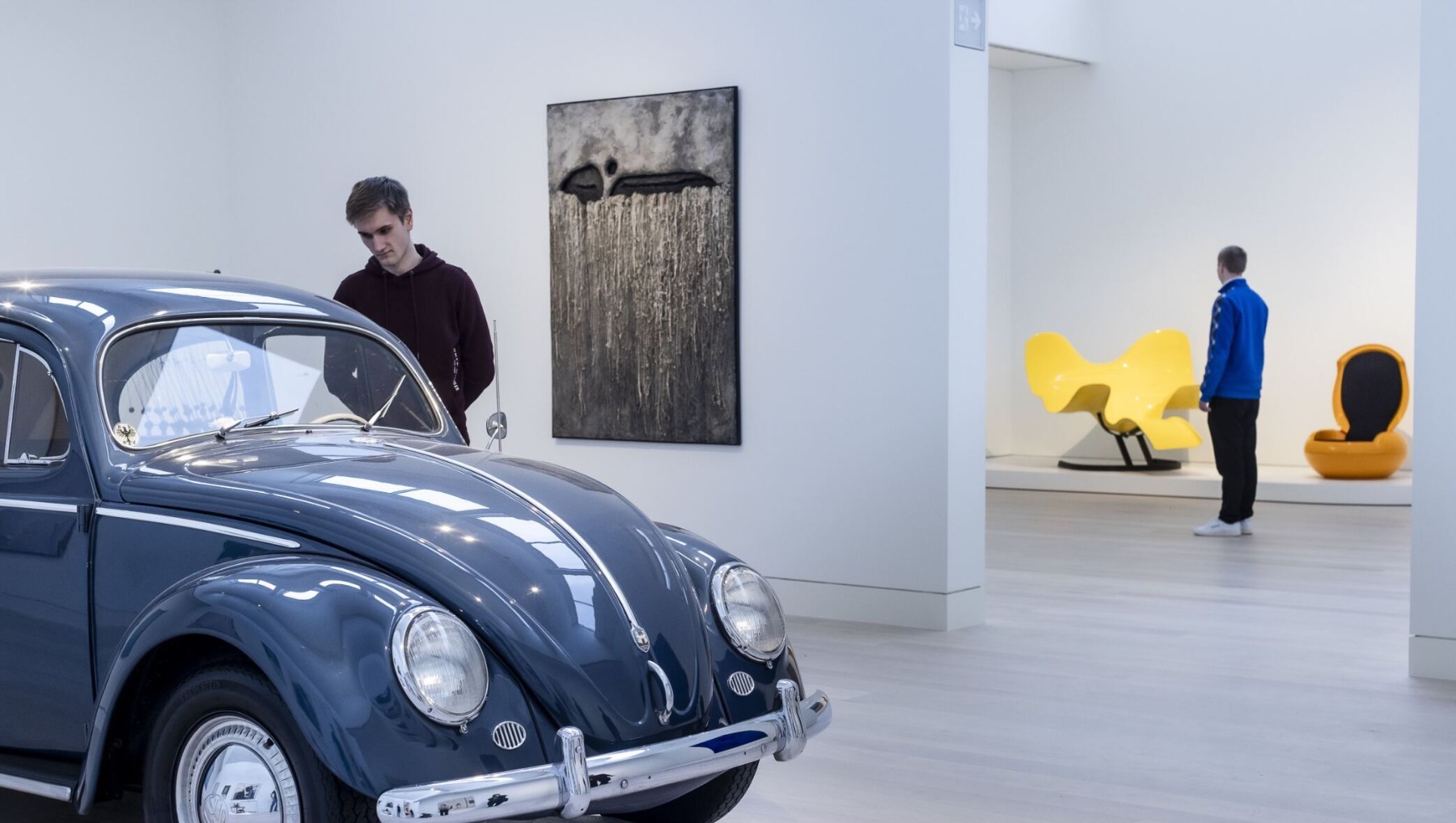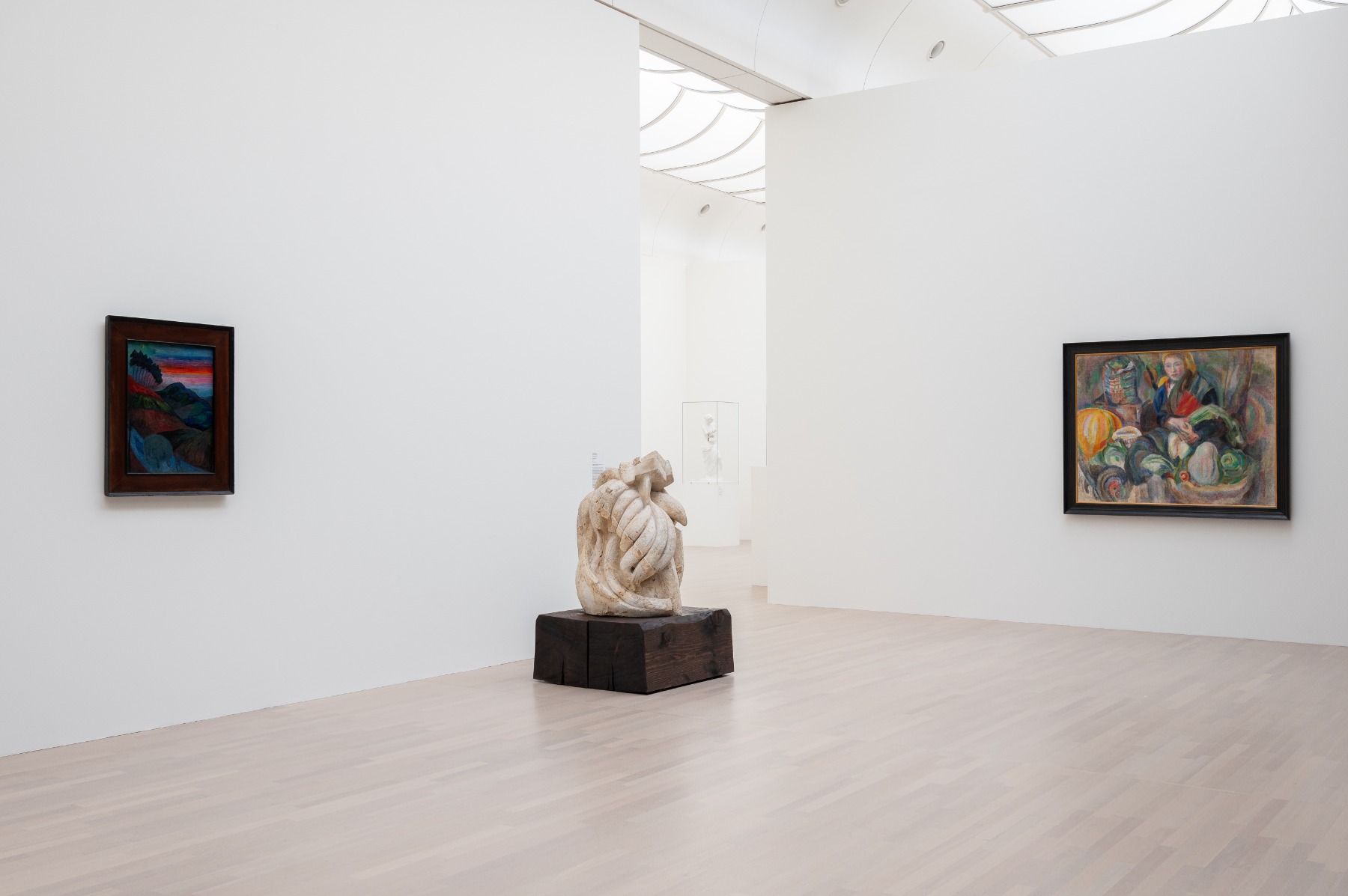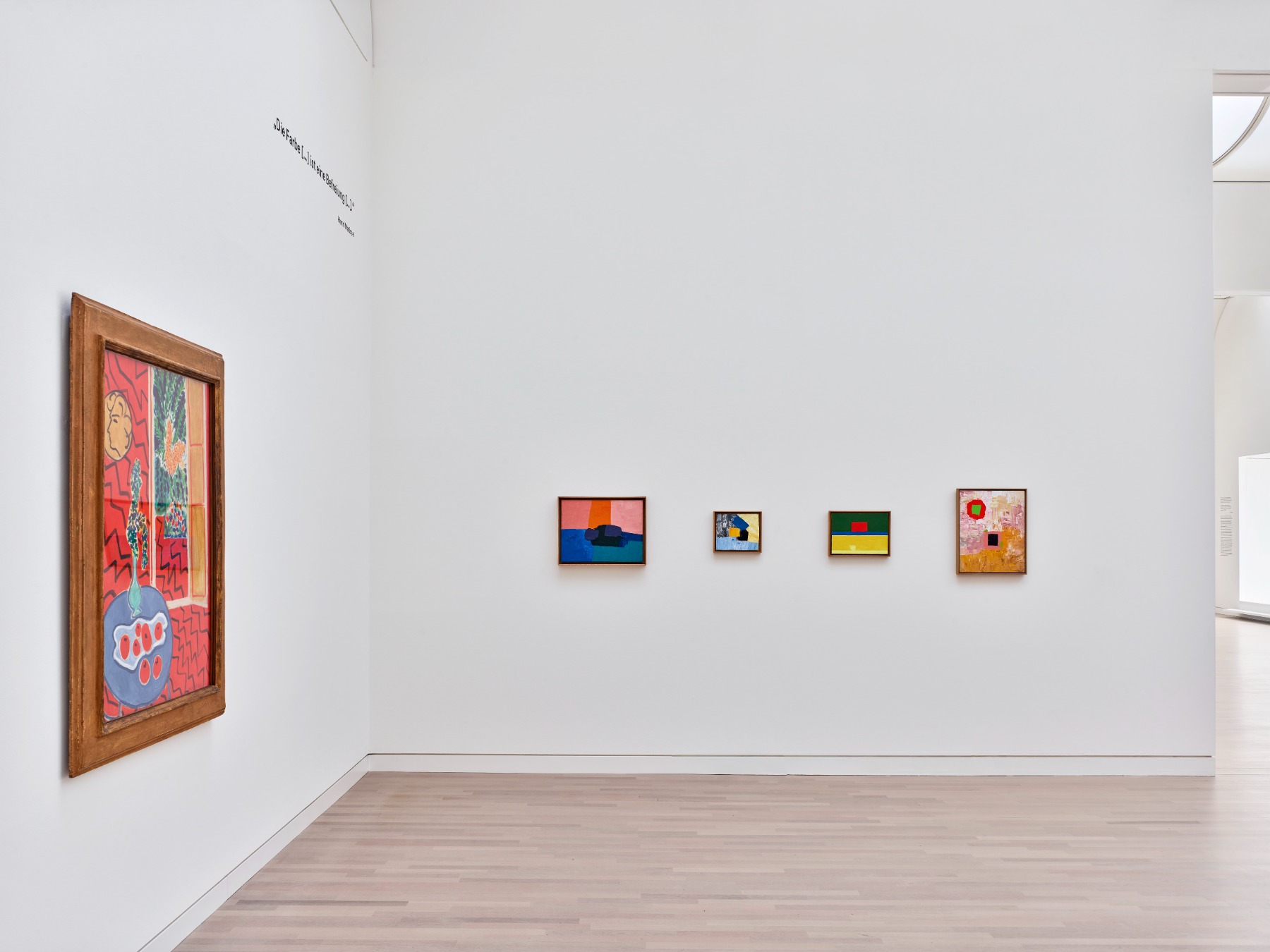
Rethinking Collections
A visit to Düsseldorf offers a stretching exercise in rethinking museum collections
“Time will tell,” people sometimes say when faced with an artwork, uncertain of its qualities. Does it really? Works of art that end up in museums have usually already passed some tests on the road to eternal life, yet, as the themes and attitudes that are considered important change over time, even museum access does not guarantee perpetual visibility. In recent years this has become very clear as museums revise their criteria for collecting by embracing more diversity and inclusivity. This also poses questions regarding how to present what has already been acquired.
A visit to Düsseldorf offers a stretching exercise in rethinking collections. The Kunstpalast, with its collection of 130,000 objects, recently relaunched itself after years of renovation. The collection has been presented in a new setup in which objects meet in stylistically polygamous relationships. You won’t find any separation between masterpieces and lesser-known works here, nor between different disciplines of art – breaking with previous models of presenting, everything is now displayed together and under the same roof. Meanwhile, another museum in Düsseldorf, K20, has taken a different route in rethinking their collection – namely, by filling in the gaps in the existing historical art narrative. A visit to these two institutions underlines what the Rhine river, steadily streaming through the city, has known since its origin: What appears to be solid and stable is actually always changing and in a state of flow.
The New Kunstpalast, Düsseldorf, collection presentation
Kunstpalast director Felix Krämer attempts to break free from established hierarchies in art history by presenting high art next to daily artifacts or pieces from lesser-known artists. “We have several works by Gerhard Richter, and we will show them, but we do not know how people in a hundred years will look at them, nor if they will still regard them as being top-notch.” As a museum director, he does not want to confirm such validations nor take them for granted, but rather challenges the viewer to decide for themself. The acquisition of more female perspectives, also in regard to historical works, is part of this trajectory.
The Kunstpalast collection is diverse in terms of genres: painting, design and religious objects, furniture, photography and prints. Like other museums, the Kunstpalast used to highlight each genre through routing (baroque prints here, modern painting there), but now it presents everything together. Here, “together” means spread over 44 rooms and designed in a one-way trajectory in which chronology has been chosen as the organizing principle for displaying the objects.
Right from the start, you bump into multiplicity. In the first room, there’s a giant wooden door panel from around 1500 (origin unknown) combined with a series of early religious statues of both Asian and Christian descent. The connecting principle is the fact that they are among the oldest items in the collection. It is up to the viewer to associate or question if or how they relate further. The one-way routing has been laid out tastefully in a building featuring state-of-the-art architecture, but there is also a feeling that one is being shepherded: even if you want to see only some sections, the Kunstpalast, much like an IKEA superstore, forces one to navigate the entire path.
The New Kunstpalast, Düsseldorf, collection presentation
What happens with the collection in such a form of presentation? Do new perspectives open up? The first rooms seem spacious, and the presented combinations of objects come as an offer that can be met with curiosity. A suit of armor meets a painting, meets a dress. But moving onwards through the centuries and towards more recent art history, the curated presentation starts to feel fragmented and frivolous. For instance, in the same room, a typical blue painting of Yves Klein is presented with paintings from several other artists, while a Volkswagen Beetle is exhibited as an example of car design from the 1950s. For the Beetle, it may be nice to be among Klein and other painters, yet the car dominates the room and sets a tone that leaves little reflective space for the artworks surrounding it. In most of the other modern and contemporary rooms there’s a bit of everything, as well as many single works by an artist instead of multiple works together, which would show a more comprehensive body or attitude. As a result, this “everything” leads to nothing, preventing the viewer from entering into a deeper space of interpretation, understanding, or simply appreciation.
The curators say: We do not want to prescribe a framework of interpretation nor hierarchies; we are presenting all objects as being equal. One could argue whether that is even possible, but even if so, a countering question is – aren’t museums exactly there to offer a framework for interpretation? Isn’t it their job, foremost, to make suggestions about meaning and to present narratives for discussion?
K20, ‘Rethinking the Collection’ chapter III, with works by Marianne von Werefkin, Louise Bourgeois and Sonia Delaunay-Terk, Kunstsammlung Nordrhein-Westfalen
Moving to another Düsseldorf museum, K20, with a much smaller collection (modern and contemporary art), one again finds a process of “rethinking the collection”. However, the choices made at K20 could not be more different than those of the Kunstpalast. K20 director Susanne Gaensheimer has set out to fill some gaps in the museum’s modernist narrative by, for instance, introducing more works by female artists. Keywords in her designed program are dialogue, society, equality, globality, innovation, and future. Gaensheimer proposes a lot of change, but does this without dismissing the narrative that the museum has followed since its inception. Rather, she tells the story in a new way – from a present-day perspective.
At K20, the created dialogues have not been decided primarily by chronology but by the orientation of each work and its impact, as well as how it is seen from different cultural perspectives. For instance, a work by Henri Mattise has found a new neighbor in four small works created around twenty years later by Etel Adnan. Here, the breakthrough of color in French painting has been paired with the vision of an artist who grew up in Lebanon, and who has been deeply affected by the conflicts in her home country. For Adnan, painting was a way to overcome war and destruction as well as to pay homage to beauty – which can also be said of Matisse. It is painting that transcends suffering instead of presenting it. In another instance, a wooden relief by Hans Arp from 1931 has found a partner in a work made in 2022 by Anys Reimann.
While the Kunstpalast aims to loosen the grip of an established canon by refraining from presenting a leading narrative, K20 seems to address the modern art narrative as something that needs to be updated and expanded with new angles, accents, and additions.
Arguably, the worst thing for a museum is if visitors do not really look at the art but move in a bored or automated way through the rooms as consumers and not as participating actors. This happens easily when displays stay unchanged for long periods of time, and the art history they propose appears to have been set beyond discussion. The challenge, as the Düsseldorf museums (and many others) have demonstrated, is to open eyes, elicit questions, disturb habits.
K20, ‘Rethinking the Collection’ chapter III, an interior by Henri Matisse from 1947 and four works by Etel Adnan, from 1960 till 2011, Kunstsammlung Nordrhein-Westfalen
Museums that collect contemporary art naturally have a paradoxical relationship with time. On the one hand, there is the quest for eternity – the intention to collect things that are worth keeping because they are “good” and culturally relevant. On the other hand, such museums also want to capture, if not co-define, the spirit of our time. They do not want to be dusty, conservative pantheons of yesterday but museums of the here and now that relate to the experiences, worries, needs and insights of today’s visitors. For this to happen, they need to stretch in two ways: maintaining a sense for what could be timeless while also following the pace of the present day. They should speak out through acquisitions, but also through the stories they tell through the way they present the works of art.
K20, ‘Rethinking the Collection’ chapter III Hans Arp, Amphore (Vase), 1931, painted wood (relief), and Anys Reimann, Sitting Belle, 2022, Mixed media collage, oil on canvas, Kunstsammlung Nordrhein-Westfalen, Düsseldorf
In the end, it is not satisfying to settle for “time will tell”. Used as a binder to glue different works of art together, time does not provide many insights. It can be interesting to know the different kinds of works that were all being made in the 1950s...but then what? Creating dialogues across time seems like a more interesting approach, one where the goal is to open eyes and show new perspectives on what has been made. This approach has also been quite successful in other museums, for instance, in the Folkwang Museum in Essen, half an hour from Düsseldorf. Artworks can become energized by counterparts from different cultures or eras, such as when you see how lessons of early abstract art have been digested by later artists. Thematic interests, or affinities in mentalities, can be seen across eras and borders, and between artists that never even knew of each other. The power of storytelling can support such relationships in becoming visible. Yes, developing stories can be practiced by viewers who encounter the works, but it should be performed by the curators who stage the presentations. Their stories are not there to pin down eternal truths, but to make propositions and open up conversations.
Title image: The New Kunstpalast, Düsseldorf, collection presentation